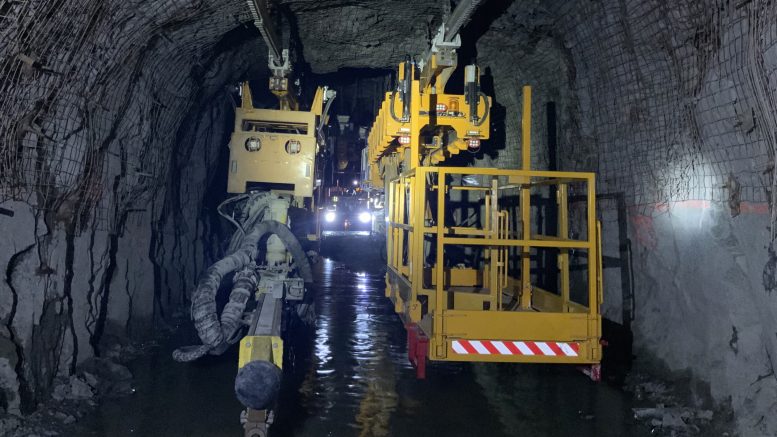Torex Gold (TSX: TXG) has announced it will proceed with conventional development and mining methods for its proposed Media Luna project in Mexico instead of using the newly developed Muckahi mining method.
The company says the decision follows the outcome of various risk assessments, extensive comparative financial analyses, and the results to date of the Muckahi test program at El Limón Deep (ELD).
Torex said the monorail-based technology would no longer be used in the Media Luna feasibility study currently underway, with publication pencilled in for the March quarter of 2022.
“After an analysis of the results to date of the Muckahi test program at ELD and an assessment of business risks, the board has approved a decision to pursue the Media Luna feasibility study on a conventional mining basis, the company says.
“While the monorail-based technology has progressed since the beginning of the ELD test program, testing to date of the individual components operating as an integrated system demonstrates that additional process and equipment engineering is required to achieve desired advance rates, cycle times, and associated cost efficiencies and that there is insufficient available upside in using the technology as it relates to financial or schedule considerations for Media Luna.”

Torex Gold’s Media Luna project in Mexico. Credit: Torex Gold.
Torex is pioneering the potentially disruptive Muckahi concept, developed as an alternative to established underground mining methods. Torex believes the innovative process can bring a 30% reduction in underground capex requirements, a 30% reduction in opex and accelerate the company’s return on investment by up to 80%.
The monorail mining system has been developed to access narrower orebodies more efficiently. It involves steep ramps that dramatically reduce the length of conventional ramps, roof-mounted monorails and equipment to run on them, and minimal underground infrastructure.
Torex says the decision to not proceed with the monorail-based Muckahi method leaves it without a way to access the deep-laying ore, “since there would be no access … via any other method without considerable investment and schedule disruption associated with driving conventional ramps.”
Aside from the technical risks, the company says additional business risks require time and consideration, such as permitting and regulatory compliance, given there is no precedent for the technology.
As such, Torex says it has determined that pursuing the feasibility study on a conventional mining basis “is a more prudent approach to mitigate operational and financial risk to the business.” Media Luna will become the primary source of feed at the Morelos property after mid-2024.
While the test results to date indicate that the technology is not mature enough for deployment at Media Luna, Torex continues to have confidence in its potential. Aspects of the monorail-based technology are currently being deployed to develop the Guajes tunnel, and the potential to develop the EPO deposit at Media Luna with monorail-based equipment will be evaluated in a preliminary economic assessment to be released in the first quarter of 2022.
Using the technology at EPO would allow for more testing of the integrated system within a live production environment. EPO hosts an inferred resource of 1.01 million gold equivalent ounces in eight million tonnes at an equivalent gold grade of 3.93 grams per tonne.
Media Luna hosts 20.9 million tonnes indicated grading 5.27 gram per tonne gold-equivalent for 3.54 million oz. It also has 18.9 million tonnes at 4.08 gram per tonne gold-equivalent for 2.48 million oz in the inferred category.
Torex also announced the board had approved a pushback of the El Limón open pit, which is expected to add about 150,000 oz. of gold production and extend open-pit mining to mid-2024. This would align with the first production from Media Luna in 2024.
Torex reported headline quarterly earnings of US$47.4 million, or US55¢ per share, compared with a profit of US$3.6 million, or US4¢ per share a year earlier.
Revenue for the three months ended June came in at US$205.9 million, double that of the year-earlier period.
Torex shares quoted on the Toronto Stock Exchange traded nearly 5% higher on Thursday at $14.03, despite the year-to-date trajectory being down 43%. It has a market capitalization of $1.2 billion (US$960 million).


Be the first to comment on "Torex foregoes the Muckahi mining method for Media Luna"